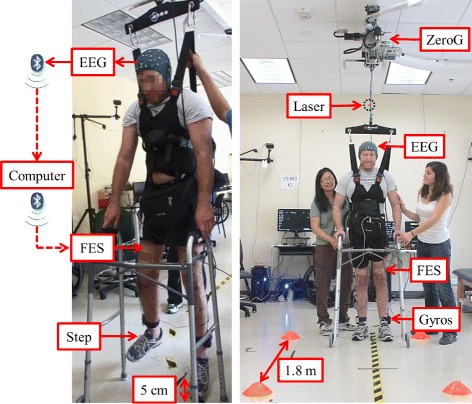Fig. 2.

Experimental setup. Left: The suspended walking test. In response to “Idle” or “Walk” cues displayed on a computer screen (not shown) the participant modulates his EEG by idling or attempting to walk. EEG is sent wirelessly (via Bluetooth communication protocol) to the computer, which processes the data and wirelessly sends a decision to either “Idle” or “Walk” to a microcontroller. The microcontroller (placed in the belt-pack) drives the FES of the femoral and deep peroneal nerves to perform either FES-mediated standing or walking (in place). Right: The overground walking test. In response to verbal cues, the participant performs BCI-FES mediated walking and standing to walk along a linear course and stop at three cones positioned 1.8 m apart. The basic components are: the BCI-FES system, motion sensor system (two gyroscopes and a laser distance meter), and the ZeroG body weight support system to prevent falls. The information flow from EEG to FES is identical to that of the suspended walking test. Note that the participant’s face was scrambled due to privacy concerns
